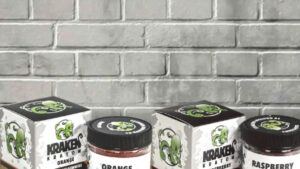
Discover essential tips for choosing the best kitchen flooring in Dubai homes. Learn from a real homeowner’s journey and explore styles, materials, and maintenance tips tailored to the UAE climate.
Choosing the right kitchen flooring is no small decision—especially when you live in Dubai. The unique blend of heat, humidity, and high-end interior design expectations makes this process more than just picking a style from a catalog. I know this first hand because just last year, I found myself deep in the process of remodeling our family kitchen.
Through trial, error, and countless hours spent consulting with designers and flooring experts, I finally found a solution that was both stylish and suitable for the local climate. In this post, I will walk you through the journey and share the top tips I discovered for choosing the best kitchen flooring for Dubai homes.
Understanding the Dubai Climate
Before diving into material choices, let’s begin by understanding the unique environmental demands of Dubai. The summers here are scorching, and indoor temperatures fluctuate depending on your A/C use. Additionally, high humidity—especially in homes near the coast—can affect materials over time.
When I started my project, I knew I needed a kitchen floor that could handle these conditions without warping, fading, or feeling uncomfortable underfoot. Durability and thermal resistance quickly became two of my top priorities.
Tip 1: Prioritize Durability Over Trendiness
One of the first mistakes I almost made was being seduced by trends. I fell in love with a matte whitewashed wood flooring look I saw on Pinterest. However, after speaking to a local contractor, I quickly learned that such styles are rarely practical for kitchens in Dubai unless you’re willing to spend heavily on maintenance.
Instead, I shifted my focus toward durable materials. Porcelain tiles, for example, offer both resilience and design flexibility. Not only are they moisture-resistant, but they also withstand high temperatures with ease.
Personal Takeaway:
In Dubai, it’s crucial to think long-term. While aesthetics matter, your kitchen flooring must endure constant foot traffic, temperature shifts, and the occasional spill without degrading quickly.
Tip 2: Consider Cooling Properties
Heat retention is another important consideration. Some materials, like natural stone, feel cooler underfoot. During the summer months, this is an unexpected luxury.
In my case, I opted for travertine tiles. They had the organic look I desired and offered a cool touch that made cooking in the kitchen during July a much more comfortable experience. Additionally, the porous nature of travertine helps manage indoor humidity levels.
Bonus Insight:
If you prefer a wood look, go for wood-look porcelain tiles. They mimic the charm of hardwood while offering better heat resistance—ideal for the Dubai climate.
Tip 3: Choose Non-Slip Finishes
Another aspect I didn’t think of at first—but one that became vital later—was slip resistance. Between washing dishes, prepping meals, and kids running around, water spills happen frequently. A slick floor could easily become a safety hazard.
Look for kitchen flooring options with a matte or textured finish. Many tiles are now rated for slip resistance, so don’t hesitate to ask your supplier for this specification. I ended up selecting a matte-finish tile with a subtle texture that provides grip without feeling rough.
Tip 4: Maintenance Matters More Than You Think
Let me be honest—keeping your kitchen floor clean in Dubai can be exhausting if you choose the wrong material. With the combination of desert dust, indoor air-conditioning systems, and oil splashes, you need something that can be cleaned quickly and thoroughly.
I briefly considered natural hardwood (just for the visual appeal), but maintaining it would have been an ongoing chore. Instead, I went with sealed porcelain tiles. They require nothing more than a quick mop and occasional grout cleaning.
Cleaning Tip:
Always use a neutral pH cleaner for tile floors. Harsh chemicals can damage sealants over time, reducing your floor’s longevity.
Tip 5: Think About Color Psychology
At one point, I had almost decided on a dark grey floor to contrast with our white cabinetry. However, when I tested a sample under our actual kitchen lighting, the space felt smaller and somewhat gloomy—something I hadn’t anticipated.
In Dubai homes where natural light is abundant, but direct sunlight can be intense, it’s important to choose colors that reflect light and create balance. Warm neutrals like beige, light taupe, and soft cream not only make your kitchen appear larger but also reduce visual fatigue.
Personal Tip:
Order samples and test them in your actual kitchen space. Look at them at different times of day before committing.
Tip 6: Budget Wisely—but Don’t Cut Corners
Initially, I underestimated the overall cost of kitchen flooring. Materials, installation, labor, adhesives, sealants—all of these add up. I had to readjust my budget midway through when I realized that cheaper tiles I found online didn’t meet local building code requirements or quality standards.
That said, you don’t need to splurge on marble or imported hardwood to get a premium look. Local suppliers in Dubai offer a range of stylish, functional options that balance cost and quality.
What I Learned:
Invest more in installation than you think you need to. A great material can still fail if improperly installed, especially in moisture-prone areas like kitchens.
Tip 7: Understand Local Market Options
Dubai’s market is unique. You have access to a wide array of suppliers—from luxury boutiques to sprawling home improvement centers. I found that Dragon Mart offered surprisingly good value, especially for wood-look tiles. On the other hand, I discovered high-end custom options in Jumeirah that catered to very specific styles.
The best approach is to explore a variety of showrooms. Take pictures, collect samples, and compare warranty options. Some suppliers also offer virtual room visualizers, which helped me make a final decision faster.
Tip 8: Sustainability Counts
As Dubai moves towards a more eco-conscious future, it’s worth considering kitchen flooring options that are environmentally responsible. I looked into recycled tiles and bamboo composite planks, which are becoming increasingly available in the region.
Eventually, I selected porcelain tiles from a manufacturer that follows green production standards. While this didn’t directly impact aesthetics or durability, it gave me peace of mind knowing I made a responsible choice.
Tip 9: Don’t Overlook Underlayment
This is one of those things no one talks about until it goes wrong. Your floor’s underlayment—the layer between the subfloor and the visible flooring—plays a critical role in insulation, soundproofing, and moisture control.
My installer recommended a specific underlay that added a slight cushion to the tiles and protected against potential water damage. It made the flooring feel more comfortable underfoot, especially during long hours of cooking.
Tip 10: Blend Style with Function
Finally, I’ll say this: your kitchen flooring should be a harmonious blend of style and function. Don’t sacrifice one for the other. The floor sets the tone for your kitchen and supports every step you take within it—literally.
I added an accent strip near the island using a patterned tile just to break up the uniformity. It added character without overwhelming the space. Little touches like this can elevate the entire look of your kitchen.
Final Thoughts
Renovating my kitchen in Dubai was one of the most rewarding projects I’ve undertaken. Through careful planning, research, and a bit of trial and error, I ended up with kitchen flooring that not only looks beautiful but also performs brilliantly in our climate.
To recap, here are the key takeaways:
- Focus on durability and heat resistance.
- Go for non-slip, easy-to-clean surfaces.
- Test colors and textures in your actual space.
- Don’t ignore the importance of underlayment.
- Prioritize professional installation.
Whether you’re planning a small update or a full renovation, these tips will help guide you to make informed decisions. After all, the kitchen is the heart of the home—and the floor is what holds it all together.



